Air-Tite provides unique veterinary needles and syringes designed to deliver specialty performance, at-scale dependability, and business-building value. Agricultural, veterinary, laboratory and university animal health specialists choose Air-Tite for:
Whether you’re looking for vet syringes for critical breeding initiatives, customized vacutainers, or simply a dependable, economical source of bulk, non-sterile supplies, Air-Tite has the quality brand name animal health equipment you trust at a price you can afford.



From robust multi-dose solutions for at-scale agricultural applications to hypodermic needles and other supplies for busy practices, Air-Tite offers a quality brand-name solution for your animal health syringe and needle needs.

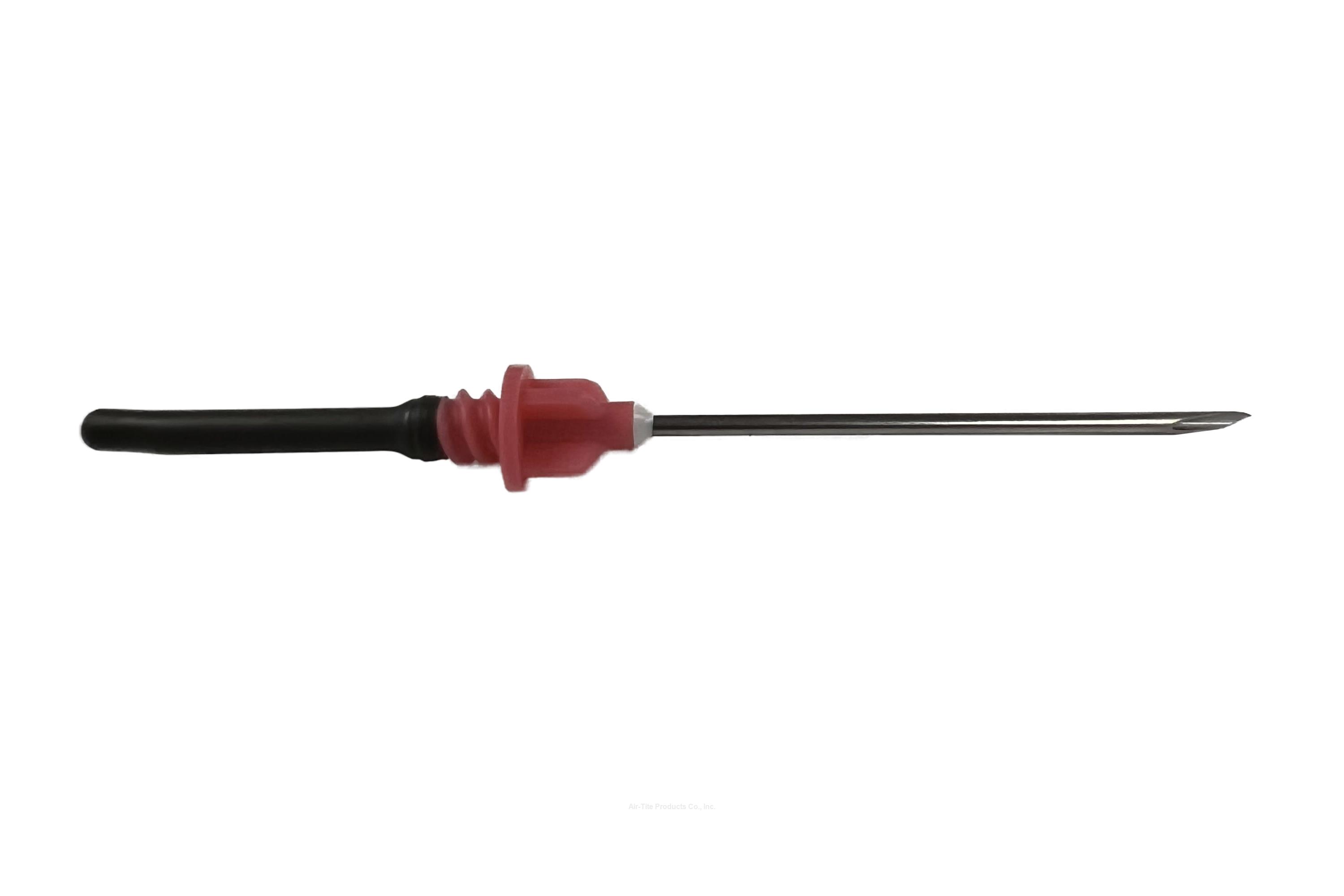 Air-Tite Premium Vet Blood Collecting Needles
Air-Tite Premium Vet Blood Collecting Needles
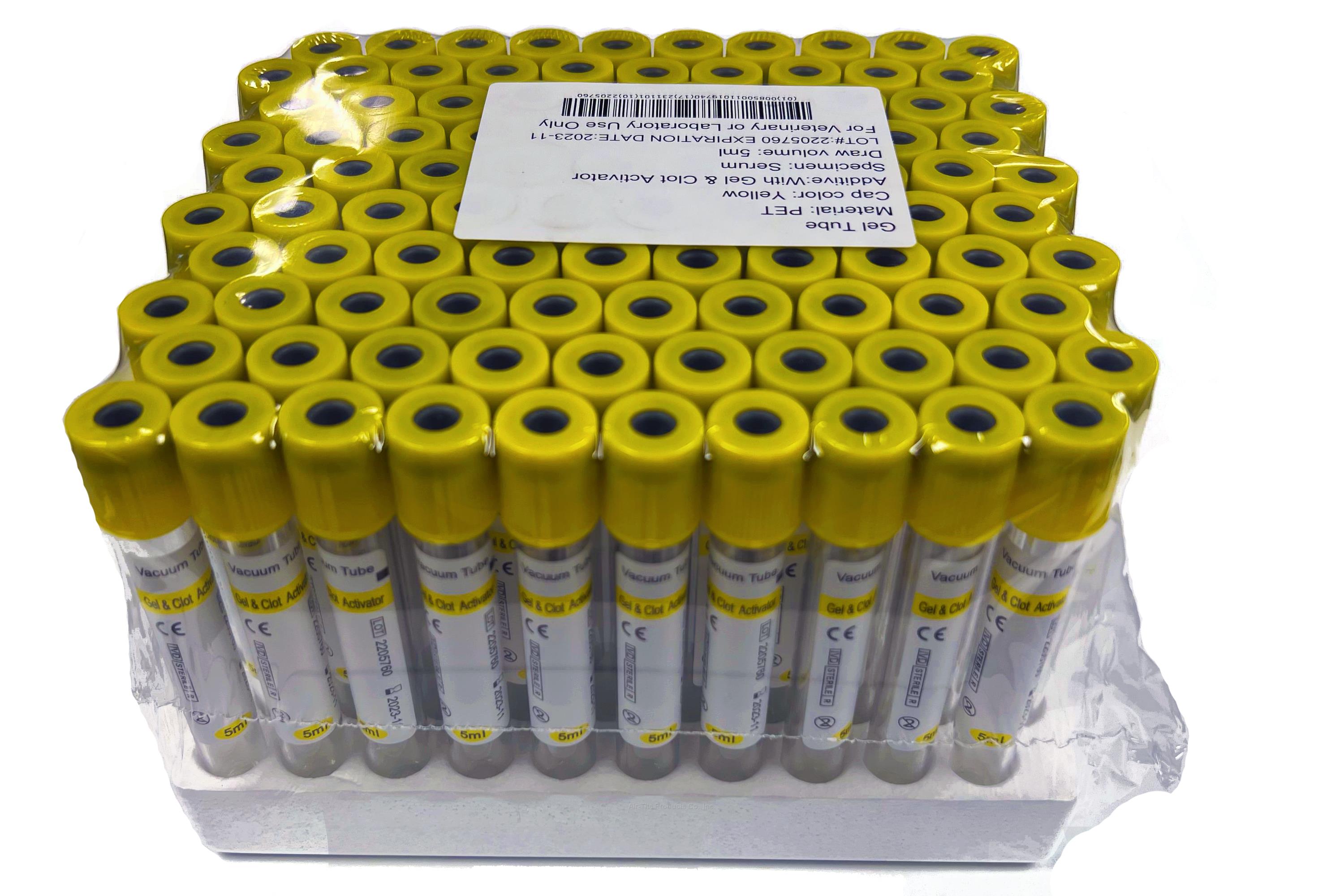 Vet/Lab Blood Collecting Tubes
Vet/Lab Blood Collecting Tubes
You work hard to deliver quality animal health care at an affordable price. Partner with an equipment provider who matches your commitment to service and reliability. Contact Air-Tite directly for personalized service or get in touch with a local Air-Tite distribution partner near you.
Our wide network of certified distribution partners serves the agricultural industry, domestic and companion animal practices, academic programs, research labs, blood collection kit manufacturers, and others.
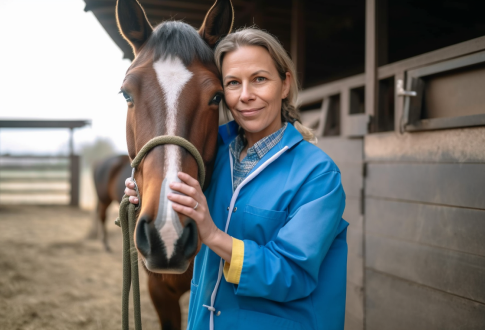
Yes! Air-Tite offers two-part, all-plastic, oil-free syringes designed for veterinary use. Both Luer Slip AND Luer Lock syringes are available in a range of sizes from 1 ml to 50 ml and in sterile or unsterile packaging.
Air-Tite can manufacture vacutainers customized to our customer’s specific needs. Select the tube size, tube material, cap style and color, and labeling combination that you need. We also offer additive/non-additive, clot-activator, and EDTA K2/EDTA options.
Air-Tite’s unbeatable selection includes rare, specialized, and hard-to-find needle and syringe combinations, (such as 1 ml/25Gx⅝” — available with both Luer Slip and Luer Lock).
If we are out of stock, or a product has been discontinued, we can help source an appropriate substitute from another manufacturer or distributor. Another Air-Tite advantage is that if we are unable to source a product, we can develop a custom product (syringe, needle, or vacutainer) for any customer or distributor.
Syringes are commonly used medical and industrial instruments but are often relegated to a “one-size-fits-all” designation. However, there are many different syringes on the market, each designed for a specific purpose.
2-part and 3-part disposable syringes are two of the more common syringes, both having qualities that make them ideal for a wide range of applications. Read on to learn more about 2-part vs. 3-part syringes and when each would be the right one for a particular application.
What Is a 3-Part Syringe?
Before we get into the critical differences between these two types of syringes, we need to talk about the most widely used disposable syringe on the market—the 3-part syringe. When someone requests a disposable syringe, they’re often asking for a 3-part syringe.
3-part syringes are extremely popular due to their low cost, smooth gliding motion, and multiple functionalities. The construction consists of a rubber gasket that sits on the tip of the plunger located inside the barrel.
As the plunger is drawn downwards or upwards, the rubber gasket acts as a sealant and creates a vacuum. One small caveat about this is that rubber tends to be a bit sticky when rubbed against a solid surface, such as the plastic barrel of a syringe. Because of this, a 3-part syringe uses a lubricant, like silicon oil, to prevent sticking and allow for a smooth downward and upward motion. For many applications, the lubricant oil does not interfere with the desired results, and the syringes work as intended.
However, for some medical, laboratory, and production applications, the lubricant may act as a contaminant and produce problematic results.
This is where a 2-part syringe comes in handy.
What Is a 2-Part Syringe?
Commonly known by the brand name Norm-Ject® syringe, a 2-part or "all plastic" syringe does not utilize a rubber tip on the plunger to create the vacuum seal. Instead, it uses a precisely engineered and slightly oversized plunger head that expands the barrel and creates a vacuum as it’s drawn downwards.
2-part syringes are made from a polypropylene barrel and a polyethylene plunger and do not require a lubricant. They’re ideal for applications that cannot have the risk of foreign substances (such as silicon oil) potentially interfering with the desired results.
Types of 2-Part and 3-Part Syringes
There are many different types of 2 and 3-part syringes on the market:
These options generally all come in sterile and unsterile as well as by the box, case, in bulk, and mini-bulk.
Syringe manufacturers can also provide customized solutions for higher volume applications, such as:
Frequently Asked Syringe Questions
Now that you know the difference between the types of syringes, we’ll share some of the common questions we hear about these syringes and answer them for you.
What Are Syringes Made Out Of?
Syringes come in a wide variety of materials, each with its own benefits and applications.
Examples include:
Metals like zinc are used in the curing process for the synthetic rubber tip used in 3-part plungers.
Can Syringe Selection Affect the End Product or Results?
Yes! If you’re a researcher or engineer and are having difficulties identifying the source of contaminants in your application, the lubricant that’s used in your 3-part syringe might be at fault.
Products such as the 2-Part Luer Lock syringe from Air-Tite are manufactured from laboratory-grade polypropylene/polyethylene and do not contain styrene, DEHP, silicon oil, or rubber. They are latex-free and are ideal for applications that require a non-reactive, inert syringe.
What Is the Difference Between Luer Lock and Luer Slip?
The key difference between Luer Lock and Luer Slip is that the Luer Lock mechanism allows for twisting a needle onto the tip, which then becomes locked in place. On the other hand, Luer Slip syringes allow for manual pushing of the needle into the tip.
Click here to learn more about Luer Lock vs. Luer Slip syringes.
What’s the Difference Between Eccentric and Centric Syringes?
You might hear the terms Eccentric and Centric (or Concentric) used when referring to a syringe. The main difference is that an Eccentric syringe tip design is offset from the center and resides more toward the edge, whereas a Centric syringe tip is located in the center.
Centric and Eccentric refer to the location of the tip in relation to the body of the syringe. A Centric syringe has the tip located centrally. An Eccentric syringe tip is offset towards the edge of the body part of the syringe.
What Size of Syringes Are Currently Available?
Air-Tite carries many different sizes of 2-part and 3-part syringes from various manufacturers, including:
Where Can I Learn More About 2-Part vs. 3-Part Syringes?
Air-Tite’s very own Will Foley breaks it down even further in a 2-part and 3-part syringe comparison article for Delivery Business News.
2-Part and 3-Part Syringes from Air-Tite
Air-Tite offers a wide range of syringes for medical and laboratory settings. Our team is easily accessible with expert staff that’s ready to discuss any of your syringe-related questions no matter your application.
Not only is our team within reach but so are our products. Air-Tite offers the convenience of purchasing syringes online with reliable and efficient customer service right at your fingertips.
Click below to get started and explore our selection of syringes.
Collecting a Blood Sample for Biotracking or other Pregnancy test systems, typically will require the use of a Single-Type blood collection needle (18g x 1” or 20g x 1”), 3ml red top Blood Collection Tubes, and a needle holder. Do not re-use the needles, as this can cross contaminate your sample and give false readings.
Get detailed instructions here.
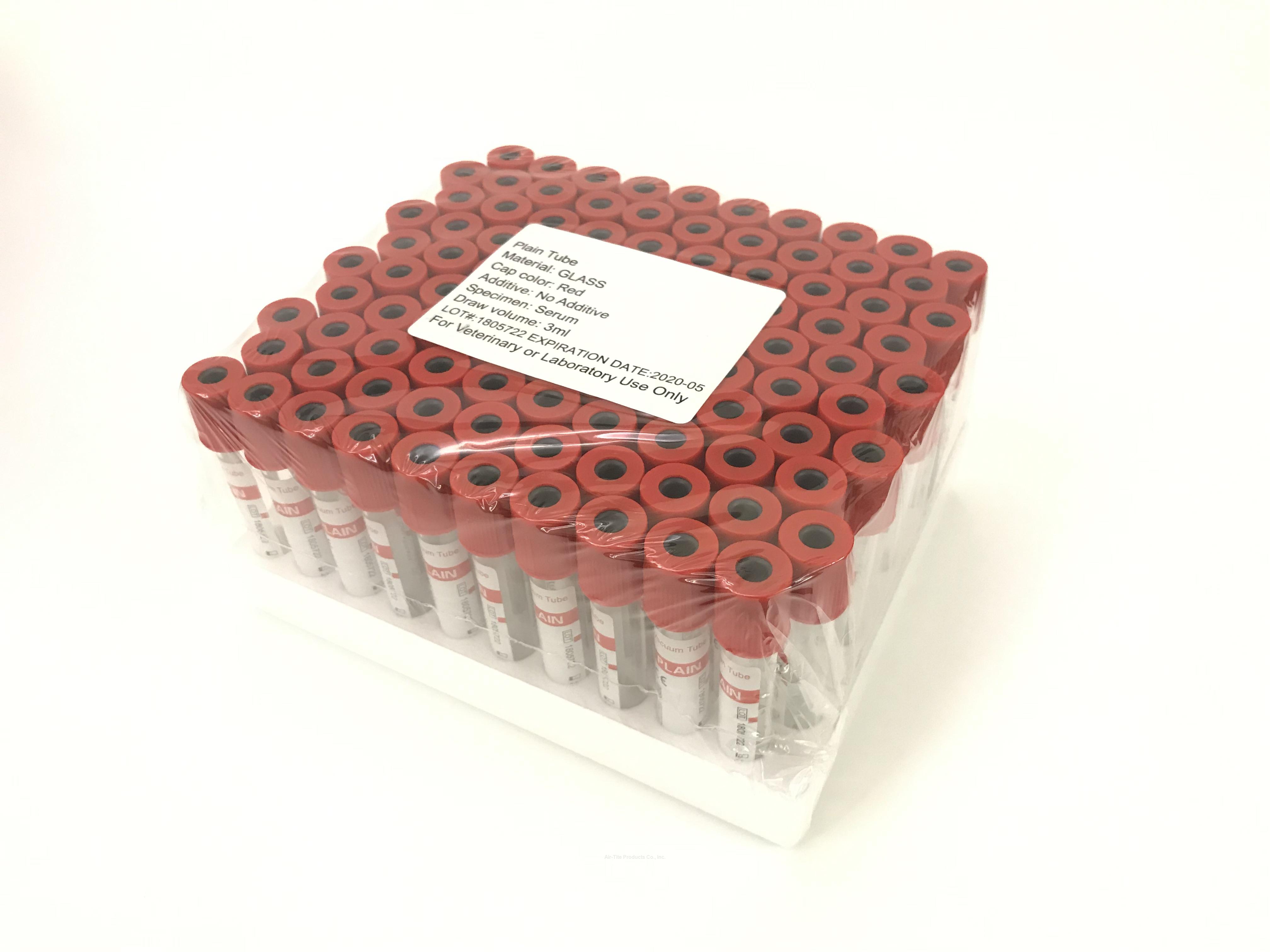 Vet/Lab Blood Collecting Tubes
Vet/Lab Blood Collecting Tubes
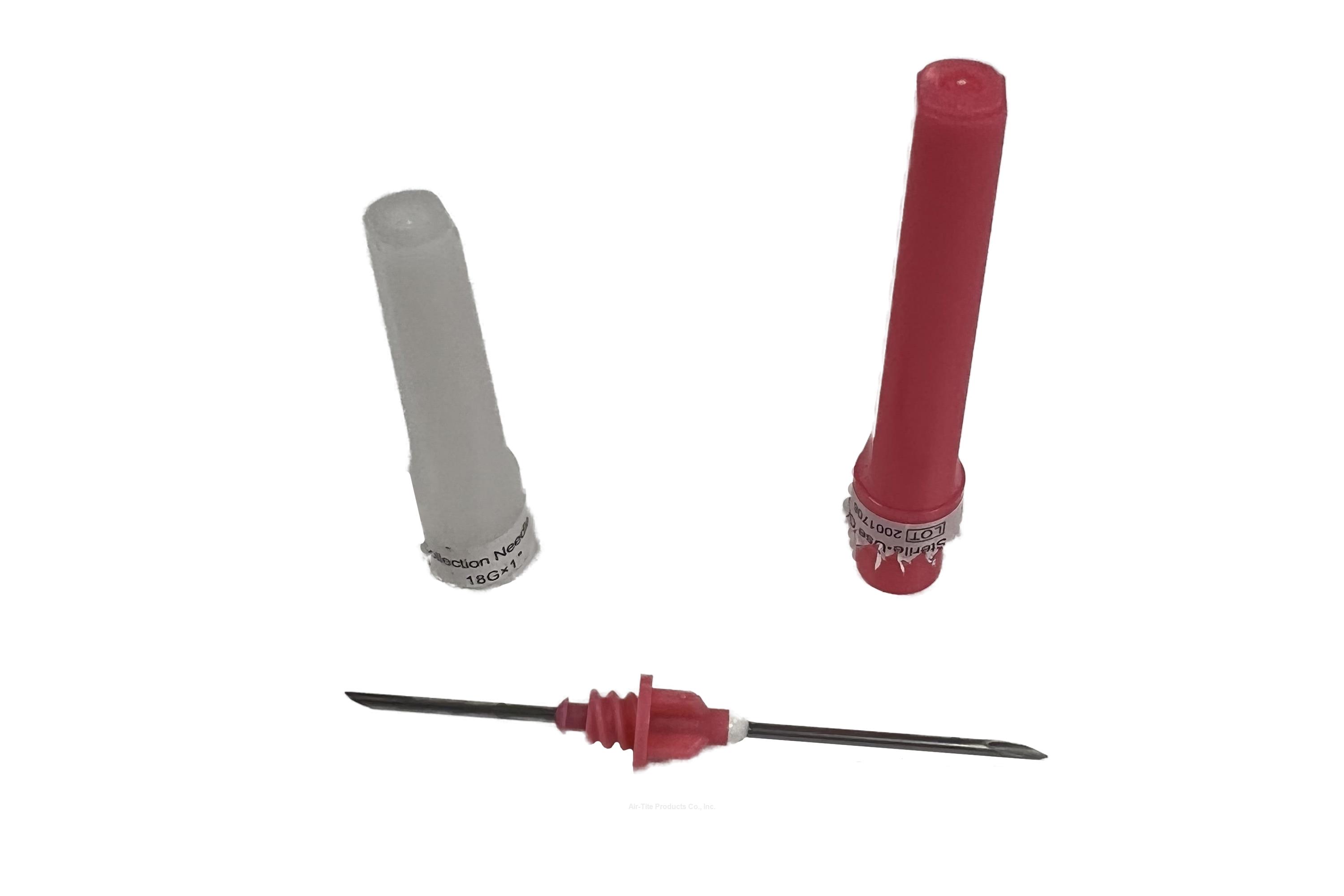 Air-Tite Premium Vet Blood Collecting Needles
Air-Tite Premium Vet Blood Collecting Needles